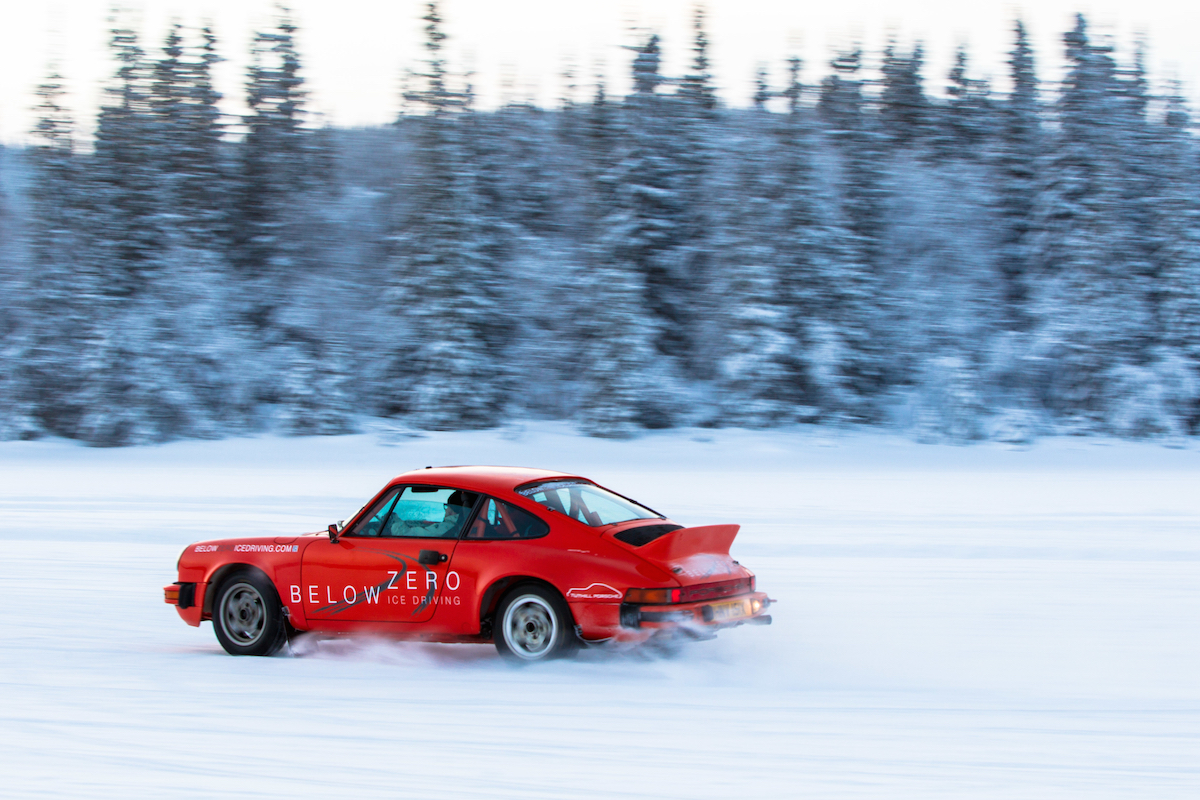
Richard’s seventh column for GT Porsche magazine looks at the origins of our Below Zero Ice Driving camp in Sweden and considers the benefits of unlimited seat time on ice:
The days are getting shorter, but not as short as they will be in January, when we decamp to Åre in northern Sweden for the start of the 2018 Below Zero ice driving season. Next year will be our fifteenth season of ice driving: this is quite an achievement and something I am immensely proud of.
The concept of a Tuthill Porsche ice driving school evolved from my competing in the 2000 WRC Rally Sweden. I learned so much during testing in Norway and then competing on the rally that I realised this was the ONLY place to teach people how to drive.
Steiner Mikkelsen, a former Norwegian champion, and father of Andreas Mikkelsen, who currently drives for Hyundai in the WRC, invited me to do some training in his Tuthill-built 1965 911 on a lake near Geilo, Norway. It opened my eyes to a world of fun and opportunity that to this day never disappoints.
We started a school and began to bring our cars to Scandinavia. For 2018, we will have seven Porsche 911s and one 914/6 available on a beautifully frozen lake for clients from all over the world to join us and get stuck in.
Our unique ice driving experience has no limits: it is all about offering unlimited potential for enjoyment and learning. We have several USPs, including eight proper FIA-spec classic Porsches to choose from, all of which are fitted with fully studded skinny rally tyres, top-quality instructors and an ethos that says ‘drive it like you stole it’. Our structure actively encourages seat time: if the cars are not moving, there is an issue. There are no whiteboards here!
We are so fortunate to be in an environment that allows us to allow the client to throw caution to the wind and drive beyond the limit. This is because, normally speaking, the worst that can happen is the cars can come into contact with a beautifully soft snow bank. A few moments of laughter later, the client is back on the track and back on (and over) the limit.
Driving on this low-friction surface magnifies things. When you get it right, you feel like a rock star and when you get it wrong it’s so plainly obvious that you feel it in spades. Even better, it has huge carry-over benefits for road driving, racing and rallying alike. The transferable skills help all who attend to better themselves.
Just because this article will appear in a specialist Porsche magazine, I won’t only assume all readers are already Porsche owners. But, whether you own a Porsche or not, this next bit may still be a revelation. For the sake of this piece, I refer only to early 911s, as the newer we go, the more technology comes into play.
Porsche 911’s are famous for the position of the engine and the ‘trouble’ this causes. However, I spend my life disproving this theory – particularly during the winter, through ice driving. The rear of the 911 is a magnificent concept and it gives massive advantages in pretty much all conditions.
The issue, if there is one, is twofold: a lack of understanding and the lack of weight at the front of the car – not the rear. The front of a 911 is light. Therefore, unless one manages to get the front turned in and loaded up, there will be understeer. Understeer then turns quickly into oversteer. So I strongly believe the front is the issue, not the rear. Combined with a driver who does not boss the car, then yes, a 911 will cause trouble. So, how do we fix this? Simple.
Each corner is divided into three phases. The first phase is braking: HARD. Phase two: be patient. Sometimes do nothing and just wait. Wait for the car to come to you, and to feel the balance and the grip. Third phase: throttle and lots of it. Drive the car through the final phase of the corner, trying to limit the slip angle.
If you master this, life just got instantly better. And there is no greater place to learn this than on a frozen lake. Ultimately, once you are really on it you can almost delete the second phase. If you get it turned in on the brakes, then you can be on full gas from this moment on.
In a 911, you have to steer the car one length ahead of yourself. Why? Well, every corner results in the same thing: oversteer. So, if we know this is going to happen, why wait? Anticipate it and deal with it before it happens. The perfect corner will actually mean that you will have opposite lock on before you’ve even turned in! Tricky for me to demonstrate this in print, but spend a few days on the lake and you’ll see.
To spend a day on a frozen lake without a car is a privilege. To spend a day or two on a lake with a Tuthill Porsche 911 and in the hands of our amazing crew is beyond words. I promise.
 Back to News
Back to News

